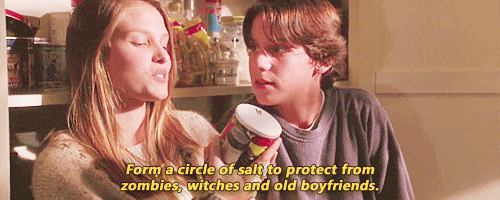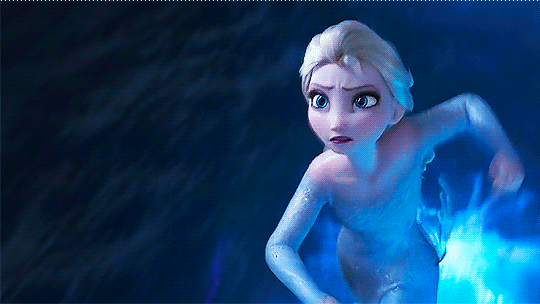Magic in fiction is dazzling, often awe-inspiring, and oh so fun to write. But magic is about more than just sparkle, and writing a magical scene is about more than special effects and mystical moments. A truly powerful magical scene grounds the magic in the stakes of your story (both emotional and logistical). In my craft guide, “Making Magic in Fiction,” we looked at how to create a compelling magic system. In this post, we zoom in and look at how to apply that system to individual scenes, creating that wow effect of magic while also serving the story in meaningful ways.
Ground Magic in Emotion
The most memorable magical scenes aren’t just about the magic itself—they’re about how the characters experience the magic. Whether you’re writing the triumphant moment in which your protagonist perfects a complicated spell just in time or the terrifying encounter with the villain’s powerful army, the scene should, first and foremost, reflect the emotional stakes of the story.
How does the character feel when using or encountering magic in this moment?
What fears, hopes, or desires are tied to the magic that is used in this scene?
For example, a character casting a spell to save a loved one might not feel their usual confidence in their abilities. Rather, they might feel a mix of fear, hope, and desperation. Highlighting the emotional impact of the magic, even more than the magic itself, will make the scene more relatable and compelling to readers.
Raise the Stakes by Limiting Magic
No matter how powerful, magic should never feel like an easy way out for your characters. In the best magical scenes, something significant is at risk, and magic can’t solve the problem—at least not entirely, or without some creative thinking to get around its limitations. This balance creates tension, keeps the stakes high, and keeps readers invested.
What happens if the spell fails?
Does using magic come at a personal cost to the character?
Does magic come with a moral dilemma or inherent danger that complicates things?
What physical, emotional, or material constraints for magic are your characters encountering?
By introducing limitations and consequences with your magic, you create opportunities for conflict, tension, and character growth.
Let it Build
Climactic moments in magical stories often involve momentous spells. But magical encounters throughout the novel often act like mini-climaxes in and of themselves. Wherever possible, build up tension before the magic happens. Don’t rush into the spell casting, but set the scene with rising stakes, anticipation, and emotional beats that make the magic feel like a natural (but exciting) culmination.
Pauses and moments of hesitation before the magic is unleashed.
Internal dialogue as the character wrestles with the decision to use magic (or with how, exactly, to use it).
External challenges that make casting the spell difficult or dangerous.
Of course, not every magical moment needs to be laden with tension—Molly Weasley using magic to cook a feast in Goblet of Fire is pure whimsy. But when your characters are using magic to get out of a tight spot or solve a conflict, when you take the time to build up to the moment, you heighten the emotional payoff when the magic finally happens, and the scene packs a bigger punch.
Make Magic Part of the Setting
A magical scene doesn’t exist in a vacuum—it should interact with the setting around it. Think about how the environment influences the magic, and vice versa. An earth-shattering storm might amplify certain spells (and others may cause ear-splitting thunder), while a sacred artifact could suppress dark magic…and a circle of salt can protect teenage mortals from the Sanderson Sisters.
Hocus Pocus, 1993
How does the magic interact with the environment?
Does the magic have a special connection to the location of its use?
How does the natural world—plants, animals, weather, the earth itself—respond to the magic?
Showing how magic responds to the environment—and how the environment responds to magic—adds depth to the scene and makes the magic feel more integrated into the world.
Show the Magic in Action
Okay, this last note is about the sparkle. One common mistake when writing magical scenes is over-explaining. Instead of giving a lengthy explanation of the spell’s mechanics, show the magic in action through vivid description and sensory details. Let your readers experience it—in all its wonder or whimsy or horror—alongside your characters.
What does the magic look, sound, or feel like?
Does the magic have a smell, taste, or texture?
How does the use of the magic impact the environment?
Frozen, 2013
Take Frozen, for example. You could write, “Elsa accidentally cast a spell that froze Anna’s heart.” Or you could write, “The shock of cold cascaded down her arm, and before she could close her fist and her mind against it, an ice-blue beam flared from her palm and barreled right toward Anna, leaving a frozen trail in its wake.”
More interesting that way, right?
Does Your Work in Progress Involve Magic?
What are your favorite parts of writing that magic? What’s giving you trouble? Let me know in the comments! And if you want more on building a compelling magic system for any genre, check out my craft guide, “Making Magic in Fiction.”


